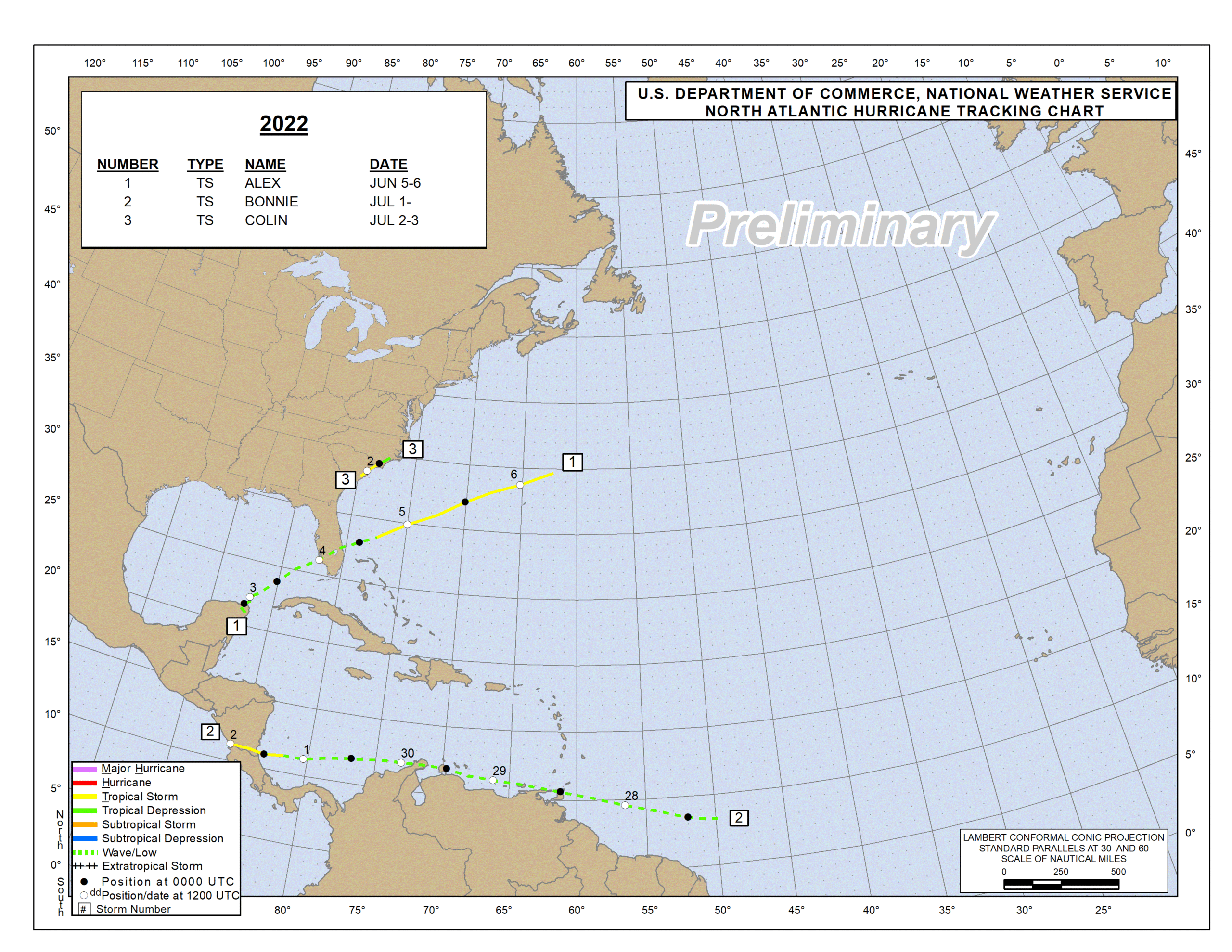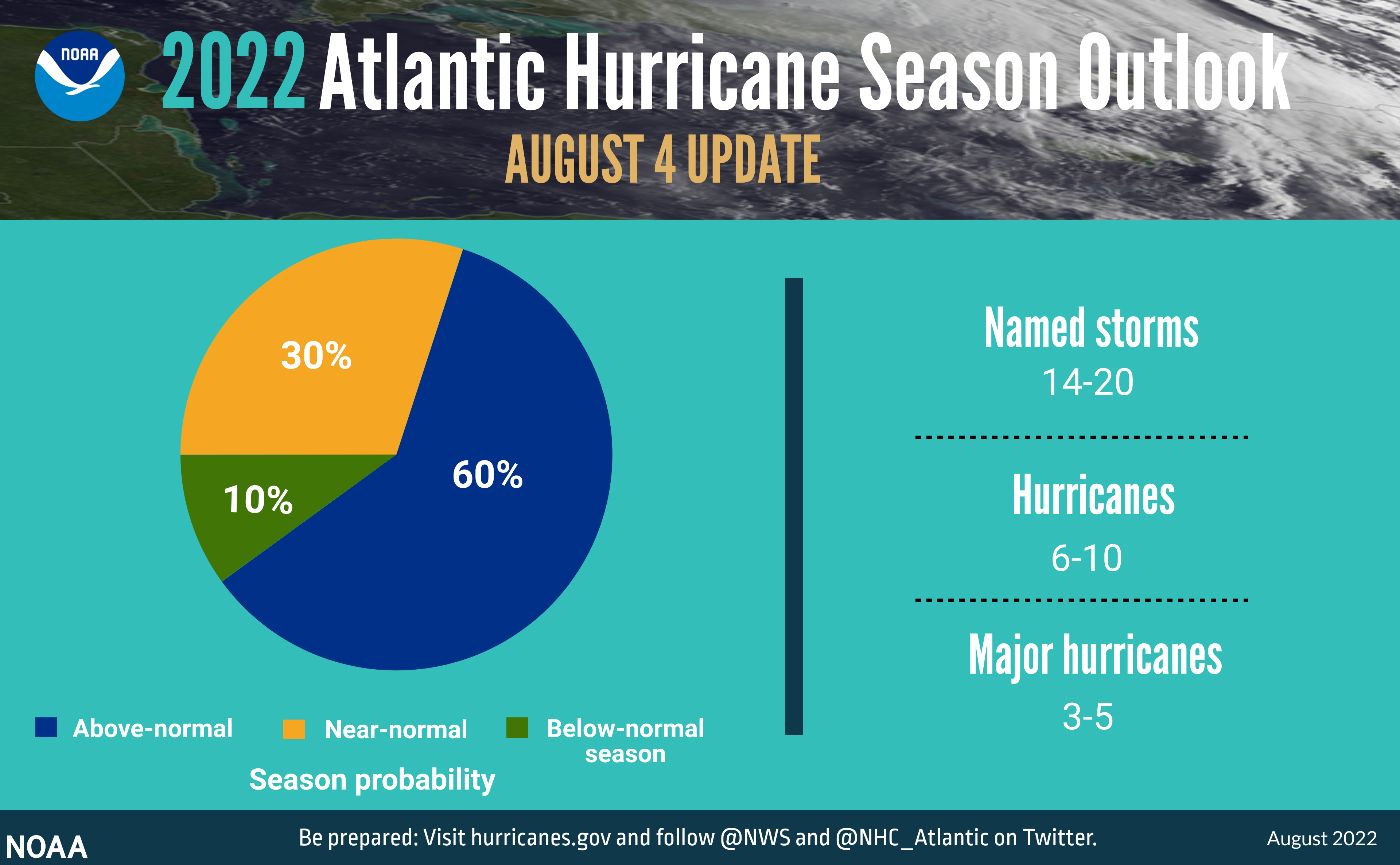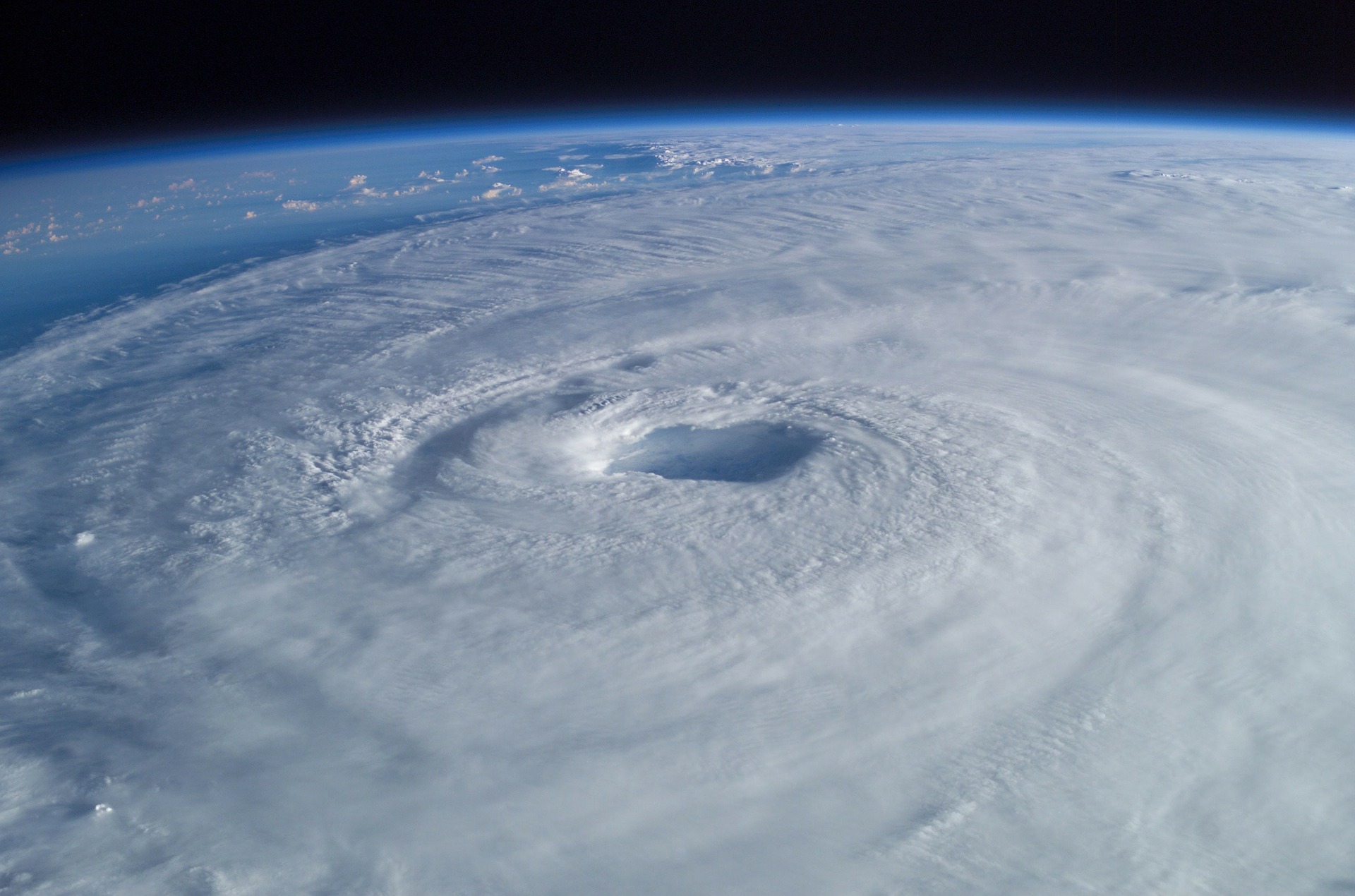In spite of the dire predictions, the 2022 Atlantic storm season has been eerily calm. So calm, in fact, that it’s been 40 years since no named storms have formed from July 3 to August 24 in the Atlantic. If August sneaks by without a named tropical storm it will only be the third time this has happened since 1961.
So far this season there have been 3 named storms in the Atlantic, none of which reached hurricane strength. Bonnie eventually became a Category 3 Hurricane but only after passing over Central America into the Pacific Ocean. Tropical Storm Colin, which formed quickly and unexpectedly off the Carolina coast, barely survived for a couple days before disintegrating offshore.

Why is this Storm Season so Quiet?
The primary ingredient needed to form hurricanes is moist tropical air. This moisture is being suppressed by persistent dry winds generated in the Sahara Desert and wind shear caused by a strong TUTT (tropical upper tropospheric trough). These conditions have been able to linger later in the year, in spite of the stronger than average La Nina.
Don’t Put the Plywood and Sandbags Away Just Yet.
Despite this, the ECMWF is forecasting a significant increase in Atlantic Accumulated Cyclone Energy for late August through September. NOAA’s recently updated Hurricane Season Outlook warns that, “conditions still favor an above-normal 2022 Atlantic hurricane season.”

Experts are also quick to point out that historically 90% of the Category 3 or stronger hurricanes happen after August 20. In 2020, 19 of the year’s 30 named storms were recorded after August 20, including all but two of the 14 hurricanes. 2021 was more of the same with 13 of the season’s 21 named storms and 4 of the 7 hurricanes forming after Aug. 20.
According to NOAA, “There are several atmospheric and oceanic conditions that still favor an active hurricane season. This includes La Niña conditions, which are favored to remain in place for the rest of 2022 and could allow the ongoing high-activity era conditions to dominate, or slightly enhance hurricane activity. In addition to a continued La Niña, weaker tropical Atlantic trade winds, an active west African Monsoon and likely above-normal Atlantic sea-surface temperatures set the stage for an active hurricane season and are reflective of the ongoing high-activity era for Atlantic hurricanes.”
Source: NOAA




